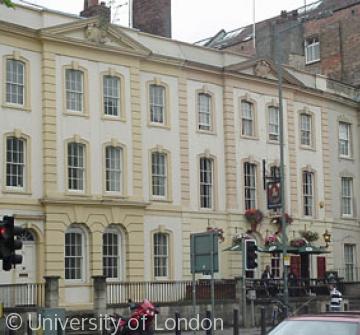Prince Street

This street was once a very busy location, with merchants and traders living here as well as warehouses alongside the quay at the backs of the houses. The houses shown in this terrace are some of the only original Georgian buildings left along the modern street.
This street was built in the early 1700s and the Shakespeare public house is one of the few buildings which has survived from then. The Shakespeare pub was part of a terrace of houses which were built for Bristol slaving merchants, Henry Combe and John Becher. Both men also owned slave plantations in the West Indies.
In 1781, Becher's wife, Mary was left 'my negro boy named Tallow' in the will of a friend who was a plantation owner from Jamaica and who had retired to Bristol.
We know that one teenager named 'Starling' who, 'played the French horn well', ran away from his master who was a slave ship Captain living in Princes Street. Other enslaved Africans might have been sold as servants in the African House Tavern which was once in the street.
At the end of the street were the Assembly Rooms, which were built in the 1760's. Here merchants, their wives and children dressed up to dance the minuet at 6.30pm, and to enjoy country dancing at 8.00pm. It was also where a dramatic meeting probably took place in 1830 between people who were opposed to the slave trade and ship owners who were profiting from the trade.
If you walk down Prince Street you will come to Farr Lane on your left. This street is named after the Farr family who were ropemakers and slave traders.
The high building on the right was probably a sugar house where raw sugar was refined and stored. The buildings closest to the water were used as warehouses to store goods ready to go to West Africa and the goods which ships brought back from the Caribbean and the Americas. There is a story that slaves were also kept in the warehouse cellars, although it is probably untrue since most slave traders sold their slaves in the Caribbean and the Americas before returning home.
Content generated during research for the paperback book 'Bristol: Ethnic Monorities and the City 1000-2001' (ISBN 13 : 978-1-86077-477-5 ) for the England's Past for Everyone series








